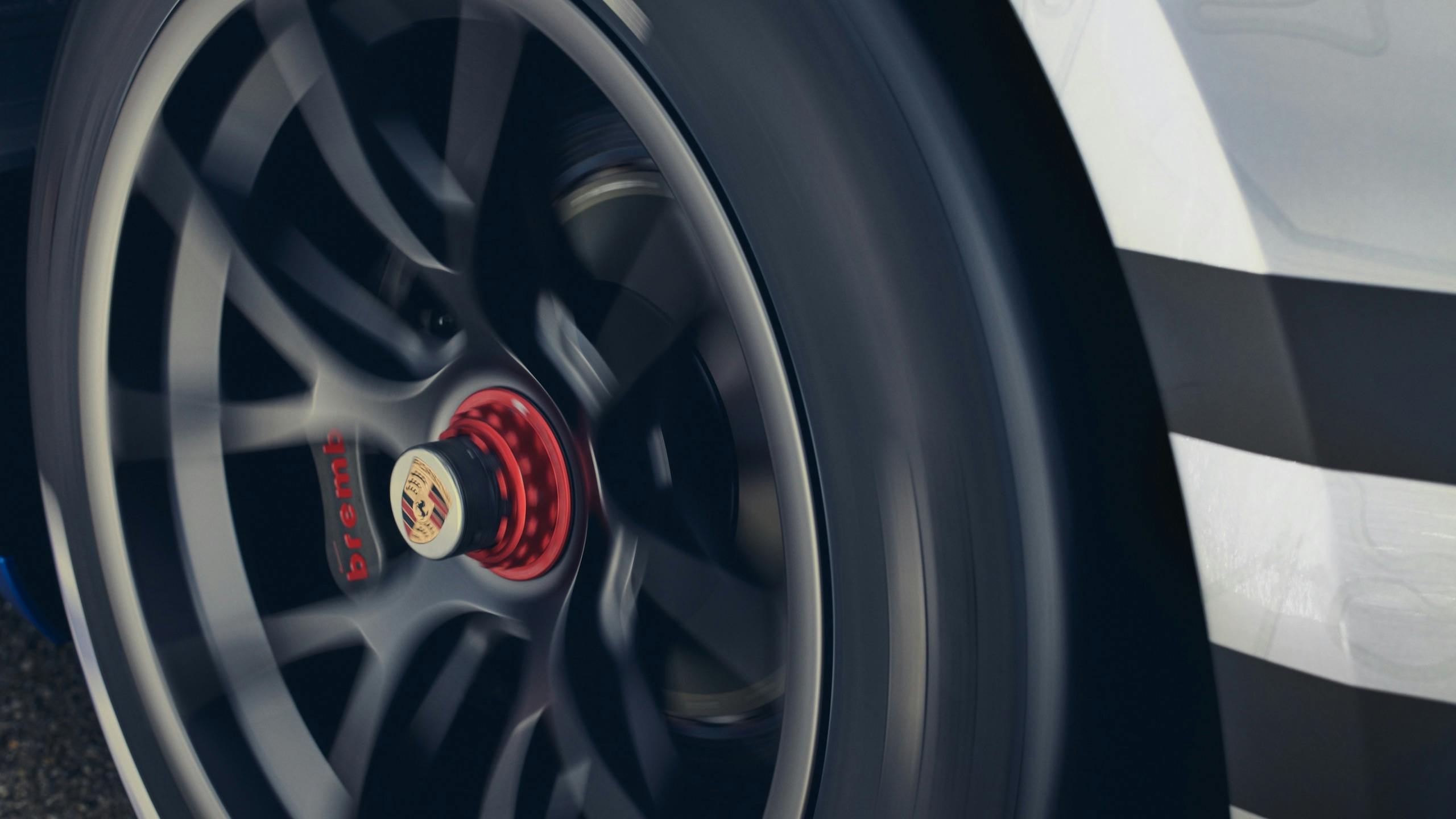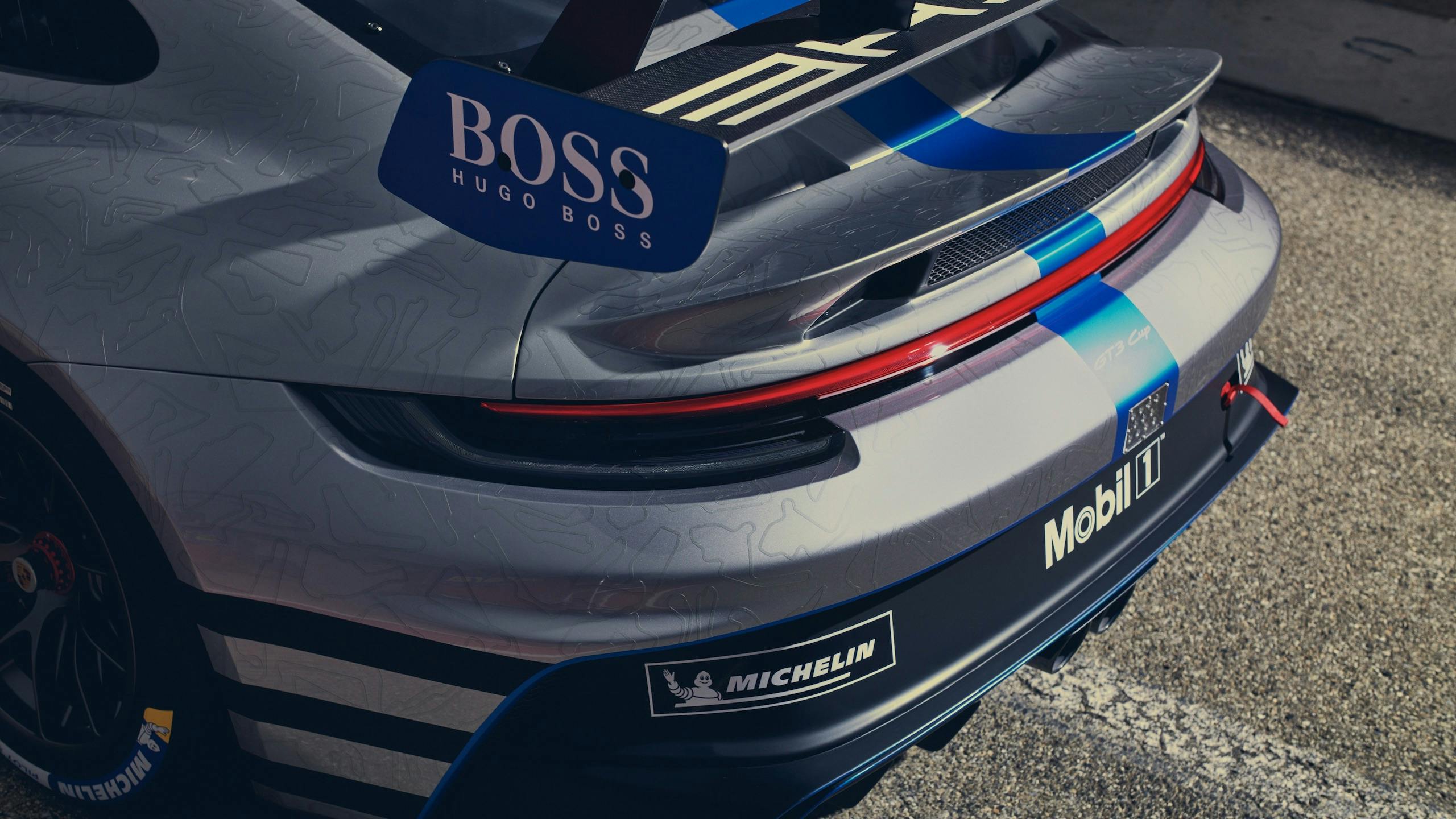Media | Articles
Porsche unveils the next-gen 911 GT3 Cup race car
Spec series built around the Porsche 911 are among the world’s best, enticing hedge fund managers and lawyers all over the world to bang fenders on the weekend in racier versions of the cars in which they commute to work. Today, Porsche announced the new 911 GT3 Cup, the backbone of international racing series such as Porsche Mobil 1 Supercup and Porsche Carrera Cup. From 30,000 feet, this is a sturdier, more durable, and slightly faster car than the one it replaces. Based on the new, 992-generation 911 (and produced on the same assembly line in Zuffenhausen), the new Cup car looks about as you’d expect—a distinctly 911 silhouette with a large wing, aggressive bodywork, and visible safety cell bars crisscrossing its interior. Some of the most iconic styling cues of the road-going 992-gen cars—such as the single light strip spanning its rump—appear here as well.

The new car uses the wider, 911 Turbo-spec body, which means that its 74.88-inch rear hips are actually 1.1 inches wider than those of the outgoing Cup car. The larger, 11-stage adjustable rear spoiler and front apron promise to produce more aerodynamic downforce, helping bolster performance in high-speed corners. The body is comprised of 30 percent steel and 70 percent aluminum, compared to the 991.2-gen car’s 70 percent steel and 30 percent aluminum bodywork. The front hood is now numbered among those aluminum components, a move Porsche says should reduce repair costs. Doors, engine hood, and the rear wing are all comprised of carbon-fiber-reinforced plastic as a way to save a few pounds.
The 992-gen car’s a tad porkier—77.2 pounds more than its predecessor, for a dry weight of 2777.8 pounds—but Porsche says the weight gains are all in tolerable areas, like additional struts in the car’s steel safety cell. What’s a yellow-lab’s-worth of weight for added safety?
A broader front axle (75.6 inches) means the new car can stuff 12-inch-wide rims underneath its even more aggressively flared front fenders. Combined with 13-inch wheels out back, the new car promises better drivability and handling. Brake pad changes are made easier thanks to a new brake caliper design. Rear axles are shared with the production car. The double-wishbone front suspension with uniball bearings comes directly from the top-dog 911 RSR race car. Likewise, the new shock absorbers have valve technology first seen in the Le Mans–conquering 919 Hybrid and 911 RSR cars.
For the first time, the 911 GT3 cup will offer electronic power steering, replacing the telepathic hydraulic steering of the previous generation. While offering a more simple setup, one free from additional hydraulic pumps, electronic power steering systems tend to lose steering feel over their direct-connection hydraulic counterparts. Then again, if there’s one company that does electronic power steering well, it’s Porsche.
Marketplace
Buy and sell classics with confidence
The 911 GT3 Cup will continue to use a naturally-aspirated screamer of an engine. The dry-sump, 4.0-liter water-cooled flat-six found in the new car offers 510 hp, a peak that arrives at an Everest-worthy 8400 rpm—900 rpm later than the previous car and just 350 spins short of the engine’s redline. Needless to say, these puppies are gonna rev like crazy. One neat trick: Porsche says the engine can run on other synthetic fuels to reduce emissions. That screaming engine mates to a six-speed dog-type sequential gearbox with a three-plate sintered metal racing clutch squeezing a single-mass flywheel. An electronic servo motor replaces the pneumatic motor from the previous car, again in the name of simplicity—but also to electronically guard against an ill-advised shift. The 25-horse bump, improved aero, and driving tech should be good for lap time gains of roughly one percent, according to Porsche. Three different exhaust systems will be available, allowing different options to satisfy the specific noise restrictions at your home track.

Servicing race cars is a matter of hours, not miles. Porsche says that the new engine can sustain 100 hours of track use between maintenance checks. The gearbox will need a “minor inspection” after 60 hours of racing, but a complete overhaul isn’t on the books until your cog collection has 120 hours of hard work on it. (A word of context: Porsche says that 60 hours of racing is around two years of competition in the Porsche Mobil 1 Supercup. Naturally, those wanting to practice on-track will need to count those hours on their drivetrain clocks as well.)
Inside, a redesigned carbon-fiber open-top steering wheel drops in from the 911 GT3 R (the car that privateer teams run in series like IMSA). Race data populates a 10.3-inch screen just ahead of the aforementioned steering wheel. To the right of the cockpit, a new control switch panel derived from that of the 919 Hybrid houses everything from the wet/dry tire settings to the brake bias controls. The driver’s seat can now be set at two different heights to accommodate an even wider range of body types.
Anti-lock brake systems (ABS) and traction control are banned in the Porsche Supercup and most national Carrera Cup series, but the software comes pre-installed on this new car. Should you find yourself in some sort of race that allows those driver aids, you can unlock them by simply entering a digital code. Motorsport control units and data logging systems that usually populate the passenger footwell can now be relocated to behind the passenger seat, enabling the installation of a second seat in case you want to do some taxi laps at your local track day.
Each car comes with a full accessories kit, including the special tools and wishbone spacers needed to service these millionaire track missiles. Porsche is keenly aware of its clientele for these cars; the reveal announcement notes that the front-and-center radiator placement for these cars has not changed, specifically citing this as a deterrent to “overly aggressive driving.”
The Porsche 911 cup car is one of the great institutions in racing—Porsche proudly states that 4251 units have been produced since the “cup car” made its debut in 1990 as a 964-generation 911. A new one on the way—and a rather impressive one, too—is cause for celebration in a year that could use good news in any form.













































